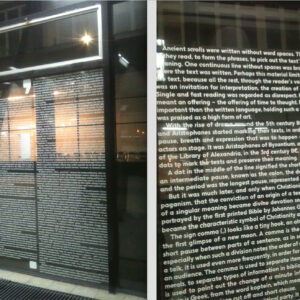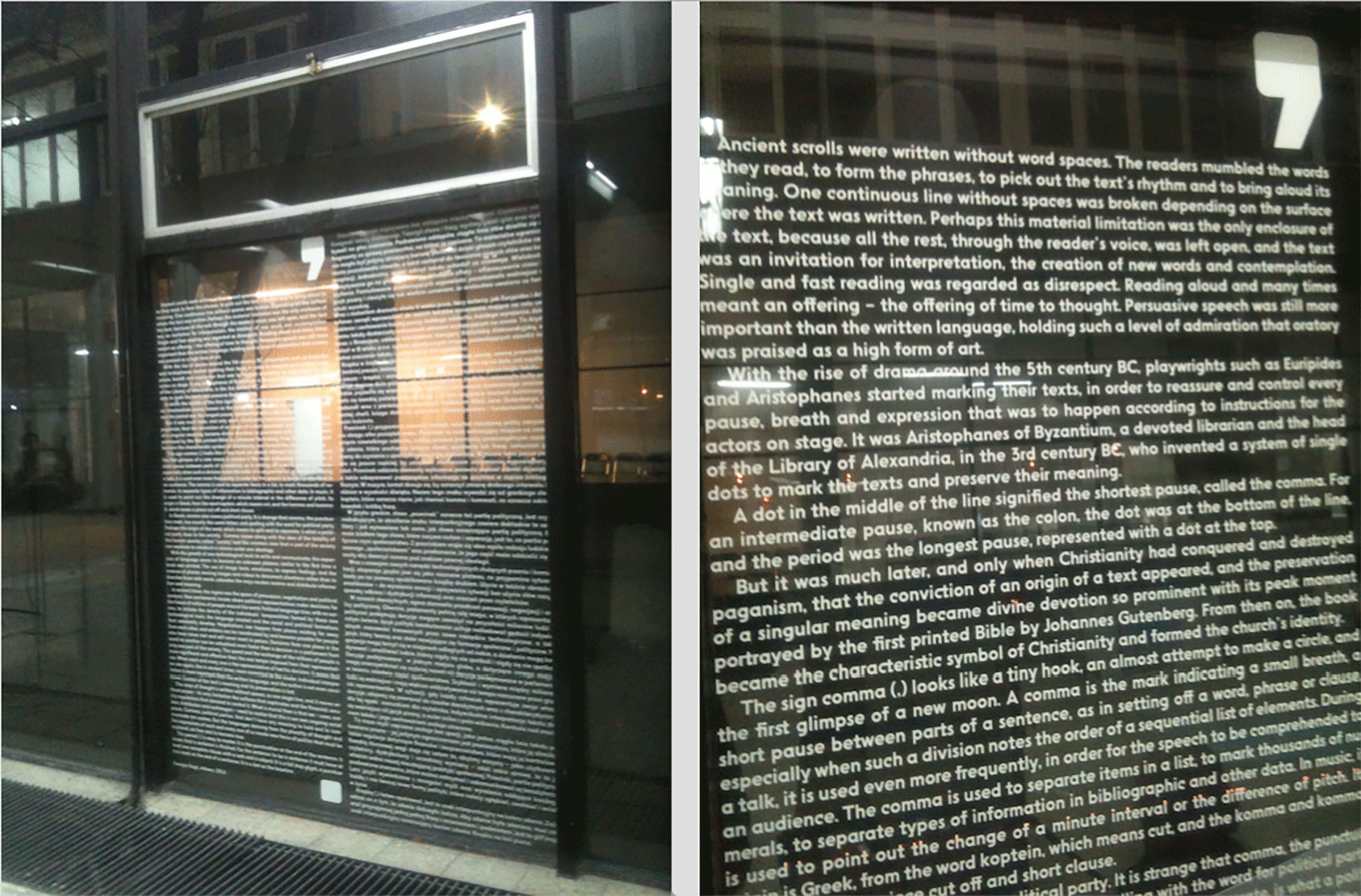Ensemble
Commas
2016
The sign (,) comma looks like a tiny hook, an almost attempt to make a circle and the first glimpse of a new moon. Comma is the mark indicating a small breath, a short pause between parts of a sentence, as in setting off a word, phrase, or clause, especially when such a division gives note to the order of a sequential list of elements. During a talk it is used even more frequently in order for the speech to be comprehended to an audience. It is used to separate items in a list, to mark thousands of numerals, to separate types of information in bibliographic and other data. In music it s used to point out the change of a minute interval or difference of pitch. Its origin is Greek from the word koptein, which means cut and the komma and kommati, which means piece cut off and short clause. In Greek, comma also means political party. It is strange that comma, the punctuation mark, has exactly the same letters and spelling with that of the word for political party. Perhaps the origin of the word, which means to split and to separate, it is what a political party does to the society. Comma comes along with the idea of the totality of human specie called “society” and the conviction that can separate to construct a comma, a part of, under one ideology. With the growth of new technological tools to write and communicate, the expansion of language seems an unknown plateau similar to the first time a book was printed. The use of image texts, emoticons, to express feelings and situations without the use of words, saturates the ways of receiving and distributing meaning. In ancient times the agora was the space of persuasion, negotiation and political analysis. Now the parliament takes that role where political representatives make decisions for the future of millions of people around the world. Political language tries, with no success, to imitate the density of the individual temporalities formed by these new technological tools, the language that it creates and the new forms of social and political figurations. Decisions, negotiations and analysis can happen from places existing far away from each other and actions can be coordinate and become possible by people who have never and they will never meet in person. Decisions from one place of the world to another can be actualized even faster than a decision in a parliament from only a part of the society. Speed, timing and temporalities of the millions of people are more important and effective than this one part of that represents them. Each and everyone is the representative of her/his decision making and the way those decisions can become praxis is the new form of politics.
Commas that don’t have any words to hold meaning and to communicate decisions or opinions are useless. But languages that derive from the plurality of thoughts and expressions of each person who constitutes our world of worlds are to be considered to set free and to become true. The period (.) is easy to master. It is the punctuation at the end of the sentence. It shows that a sentence is finished. For the sentence to be a sentence it must have at least one complete clause, with a verb and a subject. It is a full stop glyph, a punctuation mark at the end of a sentence. It is a dot on the baseline.Exhibition
Bread and Roses. Artists and the Class Divide
Museum of Modern Art, Warsaw, Poland
Unit

Title : Commas
Date: 2016
Medium: Site-specific project, mixed media
Dimensions: Variable
Access Inventory?
Request a password
Have a password?






